books by Heleen van Londen
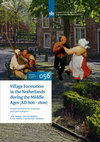
Village Formation in the Netherlands during the Middle Ages (AD 800 -1600). An assessment of recent excavations and a path to progress, 2018
How old are our historical villages and how did they develop? Which factors contributed to their ... more How old are our historical villages and how did they develop? Which factors contributed to their formation? And what have recent archaeological excavations contributed to our understanding of this process?
The formation and development of villages is one of the current priorities on the Dutch Archaeological Research Agenda (NOaA). To increase our knowledge on the subject the National Heritage Agency (RCE) initiated the ‘Valletta Harvest’ programme, a stimulus programme aimed to assess recent data and synthesize it into new insights. This research was carried out by the department of Archaeology at the University of Amsterdam.
The aim of the study was to determine what a decade of development-led archaeological (contract) research has yielded scientifically on the topic of ‘Village formation in the Netherlands during the Middle Ages (AD 800 – 1600)’. First we assessed the potential of excavated sites for synthesis (phase 1); next, relevant sites were confronted with new strands of knowledge (phase 2); and finally, we evaluated the present questions of the research agenda and made recommendations for an update (phase 3).
The four case studies we analysed revealed that the processes of village formation were quite similar on an abstract level and correspond with current settlement models. At the same time, however, these cases illustrated a great variety in form and development. Comparison with villages in the wider region showed that none could be held as exemplary. This variety means that local factors and human agency played a key role in the development of our villages.
Therefore, to advance our understanding of village formation, the primary aim of local and regional research at this point should be to describe and understand the socio-historical development of local villages within the wider village territory.
So far, systematic archaeological research in historical villages has been rare in the Netherlands. However, our case studies illustrate the great potential of archaeological observations (even small-scale) when undertaken within a municipal research agenda based on an historical-geographical framework.
This scientific report is intended for archaeologists, other professionals and enthusiasts engaged in archaeology.
Through knowledge and consultancy, the Dutch National Agency for Cultural Heritage offers the future a past.
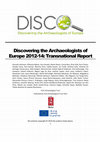
by Heleen van Londen, Joao Tereso, Rocío Varela-Pousa, Danica Staššíková-Štukovská, Andris Sne, Marjo Schlaman, Karin Scharringhausen, Eva Parga-Dans, Ain Mäesalu, Michaela Mácalová, Gavin MacGregor, Andrew Lawler, Katheriin Liibert, Tina Kompare, Nele Kangert, Jan Frolík, Mariana Diniz, Cláudia Costa, Kerri Cleary, Efthymia Alphas, Vesna Pintarič Kocuvan, Irena Lazar, Kenneth Aitchison, Tine Schenck, Katharina Möller, and Raimund Karl Between 2012 and 2014 representatives from 23 organisations in 21 European countries worked toget... more Between 2012 and 2014 representatives from 23 organisations in 21 European countries worked together in the Discovering the Archaeologists of Europe 2014 project to gain insight into the profile of the archaeological profession and labour market in those countries. The results can be compared with those of a predecessor Discovering the Archaeologists of Europe project, undertaken in 2006-08,
Employment. Across the 21 participating states, it is calculated that a total of over €1 billion is spent on professional archaeology every year, with the majority of that expenditure being on the salary costs of the estimated 24,740 people who work as archaeologists in these countries. This group of professionals represents 0.006% of the combined total workforces of those states. In many states, the absolute numbers employed in archaeology has fallen significantly over the previous six years. It is estimated that approximately 33,000 archaeologists now work across Europe as a whole.
Growth of the sector. Across Europe, organisations employing archaeologists have typically become smaller over the five years prior to this project, and employers are very cautious about predicting future growth.
Nature of the workforce. A slight majority (50.3% to 49.7%) of archaeologists are women. The proportion of women in the workforce has increased over the six years since 2006-08 from 45.9%. On average, European archaeologists are 40 years old. Very few European archaeologists are disabled – 1.1% of the total number of workers for whom data were available, a reduction from 1.5% in 2006-08.
Countries of Origin. 94% of archaeologists work in their own countries of origin, 5% are from other EU states and 1% from elsewhere in the world. Overall, this shows a slight decline in sectoral transnational mobility, as in 2006-08 more archaeologists were working away from their countries of origin.
Qualifications. In every participating state, it is normal for people working in archaeology to hold a degree – on aggregate, 94% of European archaeologists are graduates and the majority (69%) are postgraduates. 90% of archaeologists gained their highest qualifications in the countries in which they now work, with 9% obtaining those qualifications elsewhere in Europe (and 1% elsewhere in the world). When compared with the figures from 2006-08, this shows that archaeologists are increasingly educationally mobile.
Salaries. In twelve of the 21 participating states, archaeologists were paid less than the national average for all workers. An average figure of €24,901 was calculated as the mean salary earned by an archaeologist, but this is relatively meaningless as average salaries vary enormously between counties, with Danish archaeologists earning on average nine times the amount earned by their peers in Bosnia and Herzegovina.
Nature of the work. 78% of the archaeologists for whom data were available worked full-time and 22% part-time. This is a marked change from 2006-08, when the percentages were 86% full-time and 14% part-time. 63% of archaeologists held permanent contracts at the time of the research, while the remaining 37% of workers had time-limited contracts.
Structures. As was identified in the predecessor project in 2006-08, archaeological practice in the participating states is organised on different models, with varying levels of commercial activity balanced against state agency engagement. This is often linked to the funding basis of archaeological practice (variation both on the basis of funding from the state or from private sector industries, and on whether delivery is achieved by the state or by the private sector). Different states define who can be considered to be an archaeologist in different ways. Vocational education and training (VET) in the sector is almost universally delivered by universities through academic degree programmes.
Skills and Training Needs. Issues relating to specific training needs were assessed in each participating country, but, as in 2006-08, because of the variety of ways in which these questions were asked by the project partners (in order to accommodate the differing structures and approaches to archaeological work in each participating state), the information obtained cannot be usefully compared transnationally.
Trends and developments. In comparison with the predecessor work undertaken in 2006-08, the main ways that the sector has changed are that the number of jobs has decreased and the proportion of women working in the sector has increased. Furthermore, jobs are more likely to be part-time and for shorter contractual periods; archaeologists are more highly qualified, but are less well-paid in comparison with other sectors.
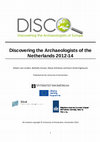
Presented here is the labour market survey of the Dutch archaeological sector for 2012 and 2013. ... more Presented here is the labour market survey of the Dutch archaeological sector for 2012 and 2013. The report presents the results of the second survey in a five year sequence of comparative research of the archaeological labour market and training in Europe. The survey is part of the European project Discovering the Archaeologists of Europe 2014, coordinated by York Archaeological Trust (YAT) and financed by the Leonardo da Vinci programme for Life Long Learning. Over twenty member states are represented in the overall study.
The study focuses on the paid workforce in the archaeology sector. The objectives for this study are formulated within the European project:
-Calculating workforce size in archaeology;
-profiling the profession in regards to diversity;
-insight in the situation and trends in the archaeological labour market, including investment in training, recruitment and career possibilities;
-insight in training demands and ‐ shortages;
-insight in the range of employers in archaeology;
-information for employers to further their businesses;
-information for individuals to further their careers;
-information for organizers of vocational training regarding training demands.
Results from this survey will be used in the Heritage Monitor maintained by the Cultural Heritage Agency of The Netherlands. Previous work to profile the archaeological sector show differences as well as similarities to the present research. Therefore, the Cultural Heritage Agency of The Netherlands will in future periodically organize surveys in close cooperation with the sector, using the present research as a basis.
Projects by Heleen van Londen

The project aims to produce a range of new didactic materials covering the most pertaining aspect... more The project aims to produce a range of new didactic materials covering the most pertaining aspects of the green archaeological heritage and archaeological dimension of natural heritage. The project intends to establish Centers of Integrated Heritage Teaching Excellence, abled to effectively use different methods of distance learning in the domain of the integrated heritage dedicated to different job markets. The project’s ultimate objective involves improving skills for green jobs and eventually create green work places for people from archaeological and natural heritage sectors. Understanding the environmental impact of archaeological heritage and significance of natural heritage for regulations and practices in the domain of archaeological heritage is to be mainstreamed into education and vocational training systems.
Funded by European ERASMUS+ programme (2014-1-PL-KA202-003565). Participants: Adam Mickiewicz University in Poznań (Poland); Aranzadi Society of Sciences, San Sebastian (Spain); Landward Research Ltd, Sheffield (UK); InEuropa srl, Modena (Italy); A Rocha pt, Mexilhoeira Grande (Portugal); University of Amsterdam (Netherlands).
Posters by Heleen van Londen
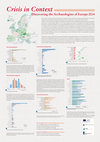
Discovering The Archaeologists of Europe 2014 (DISCO14) is onderdeel van het Leonardo da Vinci ‘L... more Discovering The Archaeologists of Europe 2014 (DISCO14) is onderdeel van het Leonardo da Vinci ‘Lifelong Learning Programme’ van de Europese Commissie. Dit programma heeft als doel de samenwerking tussen het beroepsonderwijs en de vakwereld in Europa te verbeteren.
In 2008 is voor het eerst in het kader van DISCO een vergelijkend onderzoek uitgevoerd naar werkgelegenheid en opleidingen binnen de archeologische beroepsgroep in 12 Europese landen. DISCO14 is het vervolg op dit project waarin opnieuw wordt gekeken naar de Europese archeologische beroepsgroep, nu in 20 landen. De Rijksdienst voor het Cultureel Erfgoed (RCE), de Universiteit van Amsterdam (UvA) en de Nederlandse Vereniging van Archeologen (NVvA) werken samen in het project DISCO14.
De hele archeologische sector (overheid, archeologische bedrijven, zzp’ers, musea etc.) is benaderd om een online vragenlijst in te vullen. Hiermee zijn gegevens verzameld over de archeologische sector, hoe deze is georganiseerd, hoe sluiten de archeologische opleidingen aan bij de arbeidsmarkt en in hoeverre wordt voorzien in na- of bijscholing. Daarnaast ligt bij DISCO14 sterk de nadruk op de gevolgen van de financiële crisis voor de archeologie, vooral daar waar het gaat om werkgelegenheid en investeringen in opleidingen.
Op deze poster presenteren wij de eerste resultaten.
Papers by Heleen van Londen
Bloemers, J.H.F./G. Alders/ R. van Heeringen/ M. Kok/H. van Londen/L. Theunissen/P. Vos, 2010: Fr... more Bloemers, J.H.F./G. Alders/ R. van Heeringen/ M. Kok/H. van Londen/L. Theunissen/P. Vos, 2010: From Oer-IJ estuary to metropolitan coastal landcape. Assessing and preserving archaeological-historical resources from 4000 years of living between land and water, in: T. Bloemers, H. Kars, A. van der Valk, M. Wijnen (eds.), The Cultural Landscape & Heritage Paradox. Protection and Development of the Dutch Archaeological-Historical Landscape and its European Dimension, Amsterdam, 203-238.

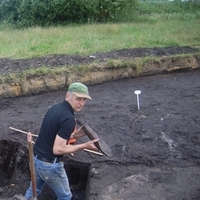

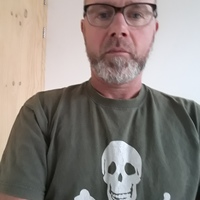
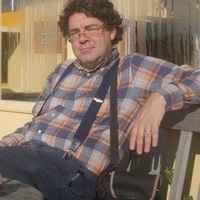






Uploads
books by Heleen van Londen
The formation and development of villages is one of the current priorities on the Dutch Archaeological Research Agenda (NOaA). To increase our knowledge on the subject the National Heritage Agency (RCE) initiated the ‘Valletta Harvest’ programme, a stimulus programme aimed to assess recent data and synthesize it into new insights. This research was carried out by the department of Archaeology at the University of Amsterdam.
The aim of the study was to determine what a decade of development-led archaeological (contract) research has yielded scientifically on the topic of ‘Village formation in the Netherlands during the Middle Ages (AD 800 – 1600)’. First we assessed the potential of excavated sites for synthesis (phase 1); next, relevant sites were confronted with new strands of knowledge (phase 2); and finally, we evaluated the present questions of the research agenda and made recommendations for an update (phase 3).
The four case studies we analysed revealed that the processes of village formation were quite similar on an abstract level and correspond with current settlement models. At the same time, however, these cases illustrated a great variety in form and development. Comparison with villages in the wider region showed that none could be held as exemplary. This variety means that local factors and human agency played a key role in the development of our villages.
Therefore, to advance our understanding of village formation, the primary aim of local and regional research at this point should be to describe and understand the socio-historical development of local villages within the wider village territory.
So far, systematic archaeological research in historical villages has been rare in the Netherlands. However, our case studies illustrate the great potential of archaeological observations (even small-scale) when undertaken within a municipal research agenda based on an historical-geographical framework.
This scientific report is intended for archaeologists, other professionals and enthusiasts engaged in archaeology.
Through knowledge and consultancy, the Dutch National Agency for Cultural Heritage offers the future a past.
Employment. Across the 21 participating states, it is calculated that a total of over €1 billion is spent on professional archaeology every year, with the majority of that expenditure being on the salary costs of the estimated 24,740 people who work as archaeologists in these countries. This group of professionals represents 0.006% of the combined total workforces of those states. In many states, the absolute numbers employed in archaeology has fallen significantly over the previous six years. It is estimated that approximately 33,000 archaeologists now work across Europe as a whole.
Growth of the sector. Across Europe, organisations employing archaeologists have typically become smaller over the five years prior to this project, and employers are very cautious about predicting future growth.
Nature of the workforce. A slight majority (50.3% to 49.7%) of archaeologists are women. The proportion of women in the workforce has increased over the six years since 2006-08 from 45.9%. On average, European archaeologists are 40 years old. Very few European archaeologists are disabled – 1.1% of the total number of workers for whom data were available, a reduction from 1.5% in 2006-08.
Countries of Origin. 94% of archaeologists work in their own countries of origin, 5% are from other EU states and 1% from elsewhere in the world. Overall, this shows a slight decline in sectoral transnational mobility, as in 2006-08 more archaeologists were working away from their countries of origin.
Qualifications. In every participating state, it is normal for people working in archaeology to hold a degree – on aggregate, 94% of European archaeologists are graduates and the majority (69%) are postgraduates. 90% of archaeologists gained their highest qualifications in the countries in which they now work, with 9% obtaining those qualifications elsewhere in Europe (and 1% elsewhere in the world). When compared with the figures from 2006-08, this shows that archaeologists are increasingly educationally mobile.
Salaries. In twelve of the 21 participating states, archaeologists were paid less than the national average for all workers. An average figure of €24,901 was calculated as the mean salary earned by an archaeologist, but this is relatively meaningless as average salaries vary enormously between counties, with Danish archaeologists earning on average nine times the amount earned by their peers in Bosnia and Herzegovina.
Nature of the work. 78% of the archaeologists for whom data were available worked full-time and 22% part-time. This is a marked change from 2006-08, when the percentages were 86% full-time and 14% part-time. 63% of archaeologists held permanent contracts at the time of the research, while the remaining 37% of workers had time-limited contracts.
Structures. As was identified in the predecessor project in 2006-08, archaeological practice in the participating states is organised on different models, with varying levels of commercial activity balanced against state agency engagement. This is often linked to the funding basis of archaeological practice (variation both on the basis of funding from the state or from private sector industries, and on whether delivery is achieved by the state or by the private sector). Different states define who can be considered to be an archaeologist in different ways. Vocational education and training (VET) in the sector is almost universally delivered by universities through academic degree programmes.
Skills and Training Needs. Issues relating to specific training needs were assessed in each participating country, but, as in 2006-08, because of the variety of ways in which these questions were asked by the project partners (in order to accommodate the differing structures and approaches to archaeological work in each participating state), the information obtained cannot be usefully compared transnationally.
Trends and developments. In comparison with the predecessor work undertaken in 2006-08, the main ways that the sector has changed are that the number of jobs has decreased and the proportion of women working in the sector has increased. Furthermore, jobs are more likely to be part-time and for shorter contractual periods; archaeologists are more highly qualified, but are less well-paid in comparison with other sectors.
The study focuses on the paid workforce in the archaeology sector. The objectives for this study are formulated within the European project:
-Calculating workforce size in archaeology;
-profiling the profession in regards to diversity;
-insight in the situation and trends in the archaeological labour market, including investment in training, recruitment and career possibilities;
-insight in training demands and ‐ shortages;
-insight in the range of employers in archaeology;
-information for employers to further their businesses;
-information for individuals to further their careers;
-information for organizers of vocational training regarding training demands.
Results from this survey will be used in the Heritage Monitor maintained by the Cultural Heritage Agency of The Netherlands. Previous work to profile the archaeological sector show differences as well as similarities to the present research. Therefore, the Cultural Heritage Agency of The Netherlands will in future periodically organize surveys in close cooperation with the sector, using the present research as a basis.
Projects by Heleen van Londen
Funded by European ERASMUS+ programme (2014-1-PL-KA202-003565). Participants: Adam Mickiewicz University in Poznań (Poland); Aranzadi Society of Sciences, San Sebastian (Spain); Landward Research Ltd, Sheffield (UK); InEuropa srl, Modena (Italy); A Rocha pt, Mexilhoeira Grande (Portugal); University of Amsterdam (Netherlands).
Posters by Heleen van Londen
In 2008 is voor het eerst in het kader van DISCO een vergelijkend onderzoek uitgevoerd naar werkgelegenheid en opleidingen binnen de archeologische beroepsgroep in 12 Europese landen. DISCO14 is het vervolg op dit project waarin opnieuw wordt gekeken naar de Europese archeologische beroepsgroep, nu in 20 landen. De Rijksdienst voor het Cultureel Erfgoed (RCE), de Universiteit van Amsterdam (UvA) en de Nederlandse Vereniging van Archeologen (NVvA) werken samen in het project DISCO14.
De hele archeologische sector (overheid, archeologische bedrijven, zzp’ers, musea etc.) is benaderd om een online vragenlijst in te vullen. Hiermee zijn gegevens verzameld over de archeologische sector, hoe deze is georganiseerd, hoe sluiten de archeologische opleidingen aan bij de arbeidsmarkt en in hoeverre wordt voorzien in na- of bijscholing. Daarnaast ligt bij DISCO14 sterk de nadruk op de gevolgen van de financiële crisis voor de archeologie, vooral daar waar het gaat om werkgelegenheid en investeringen in opleidingen.
Op deze poster presenteren wij de eerste resultaten.
Papers by Heleen van Londen
The formation and development of villages is one of the current priorities on the Dutch Archaeological Research Agenda (NOaA). To increase our knowledge on the subject the National Heritage Agency (RCE) initiated the ‘Valletta Harvest’ programme, a stimulus programme aimed to assess recent data and synthesize it into new insights. This research was carried out by the department of Archaeology at the University of Amsterdam.
The aim of the study was to determine what a decade of development-led archaeological (contract) research has yielded scientifically on the topic of ‘Village formation in the Netherlands during the Middle Ages (AD 800 – 1600)’. First we assessed the potential of excavated sites for synthesis (phase 1); next, relevant sites were confronted with new strands of knowledge (phase 2); and finally, we evaluated the present questions of the research agenda and made recommendations for an update (phase 3).
The four case studies we analysed revealed that the processes of village formation were quite similar on an abstract level and correspond with current settlement models. At the same time, however, these cases illustrated a great variety in form and development. Comparison with villages in the wider region showed that none could be held as exemplary. This variety means that local factors and human agency played a key role in the development of our villages.
Therefore, to advance our understanding of village formation, the primary aim of local and regional research at this point should be to describe and understand the socio-historical development of local villages within the wider village territory.
So far, systematic archaeological research in historical villages has been rare in the Netherlands. However, our case studies illustrate the great potential of archaeological observations (even small-scale) when undertaken within a municipal research agenda based on an historical-geographical framework.
This scientific report is intended for archaeologists, other professionals and enthusiasts engaged in archaeology.
Through knowledge and consultancy, the Dutch National Agency for Cultural Heritage offers the future a past.
Employment. Across the 21 participating states, it is calculated that a total of over €1 billion is spent on professional archaeology every year, with the majority of that expenditure being on the salary costs of the estimated 24,740 people who work as archaeologists in these countries. This group of professionals represents 0.006% of the combined total workforces of those states. In many states, the absolute numbers employed in archaeology has fallen significantly over the previous six years. It is estimated that approximately 33,000 archaeologists now work across Europe as a whole.
Growth of the sector. Across Europe, organisations employing archaeologists have typically become smaller over the five years prior to this project, and employers are very cautious about predicting future growth.
Nature of the workforce. A slight majority (50.3% to 49.7%) of archaeologists are women. The proportion of women in the workforce has increased over the six years since 2006-08 from 45.9%. On average, European archaeologists are 40 years old. Very few European archaeologists are disabled – 1.1% of the total number of workers for whom data were available, a reduction from 1.5% in 2006-08.
Countries of Origin. 94% of archaeologists work in their own countries of origin, 5% are from other EU states and 1% from elsewhere in the world. Overall, this shows a slight decline in sectoral transnational mobility, as in 2006-08 more archaeologists were working away from their countries of origin.
Qualifications. In every participating state, it is normal for people working in archaeology to hold a degree – on aggregate, 94% of European archaeologists are graduates and the majority (69%) are postgraduates. 90% of archaeologists gained their highest qualifications in the countries in which they now work, with 9% obtaining those qualifications elsewhere in Europe (and 1% elsewhere in the world). When compared with the figures from 2006-08, this shows that archaeologists are increasingly educationally mobile.
Salaries. In twelve of the 21 participating states, archaeologists were paid less than the national average for all workers. An average figure of €24,901 was calculated as the mean salary earned by an archaeologist, but this is relatively meaningless as average salaries vary enormously between counties, with Danish archaeologists earning on average nine times the amount earned by their peers in Bosnia and Herzegovina.
Nature of the work. 78% of the archaeologists for whom data were available worked full-time and 22% part-time. This is a marked change from 2006-08, when the percentages were 86% full-time and 14% part-time. 63% of archaeologists held permanent contracts at the time of the research, while the remaining 37% of workers had time-limited contracts.
Structures. As was identified in the predecessor project in 2006-08, archaeological practice in the participating states is organised on different models, with varying levels of commercial activity balanced against state agency engagement. This is often linked to the funding basis of archaeological practice (variation both on the basis of funding from the state or from private sector industries, and on whether delivery is achieved by the state or by the private sector). Different states define who can be considered to be an archaeologist in different ways. Vocational education and training (VET) in the sector is almost universally delivered by universities through academic degree programmes.
Skills and Training Needs. Issues relating to specific training needs were assessed in each participating country, but, as in 2006-08, because of the variety of ways in which these questions were asked by the project partners (in order to accommodate the differing structures and approaches to archaeological work in each participating state), the information obtained cannot be usefully compared transnationally.
Trends and developments. In comparison with the predecessor work undertaken in 2006-08, the main ways that the sector has changed are that the number of jobs has decreased and the proportion of women working in the sector has increased. Furthermore, jobs are more likely to be part-time and for shorter contractual periods; archaeologists are more highly qualified, but are less well-paid in comparison with other sectors.
The study focuses on the paid workforce in the archaeology sector. The objectives for this study are formulated within the European project:
-Calculating workforce size in archaeology;
-profiling the profession in regards to diversity;
-insight in the situation and trends in the archaeological labour market, including investment in training, recruitment and career possibilities;
-insight in training demands and ‐ shortages;
-insight in the range of employers in archaeology;
-information for employers to further their businesses;
-information for individuals to further their careers;
-information for organizers of vocational training regarding training demands.
Results from this survey will be used in the Heritage Monitor maintained by the Cultural Heritage Agency of The Netherlands. Previous work to profile the archaeological sector show differences as well as similarities to the present research. Therefore, the Cultural Heritage Agency of The Netherlands will in future periodically organize surveys in close cooperation with the sector, using the present research as a basis.
Funded by European ERASMUS+ programme (2014-1-PL-KA202-003565). Participants: Adam Mickiewicz University in Poznań (Poland); Aranzadi Society of Sciences, San Sebastian (Spain); Landward Research Ltd, Sheffield (UK); InEuropa srl, Modena (Italy); A Rocha pt, Mexilhoeira Grande (Portugal); University of Amsterdam (Netherlands).
In 2008 is voor het eerst in het kader van DISCO een vergelijkend onderzoek uitgevoerd naar werkgelegenheid en opleidingen binnen de archeologische beroepsgroep in 12 Europese landen. DISCO14 is het vervolg op dit project waarin opnieuw wordt gekeken naar de Europese archeologische beroepsgroep, nu in 20 landen. De Rijksdienst voor het Cultureel Erfgoed (RCE), de Universiteit van Amsterdam (UvA) en de Nederlandse Vereniging van Archeologen (NVvA) werken samen in het project DISCO14.
De hele archeologische sector (overheid, archeologische bedrijven, zzp’ers, musea etc.) is benaderd om een online vragenlijst in te vullen. Hiermee zijn gegevens verzameld over de archeologische sector, hoe deze is georganiseerd, hoe sluiten de archeologische opleidingen aan bij de arbeidsmarkt en in hoeverre wordt voorzien in na- of bijscholing. Daarnaast ligt bij DISCO14 sterk de nadruk op de gevolgen van de financiële crisis voor de archeologie, vooral daar waar het gaat om werkgelegenheid en investeringen in opleidingen.
Op deze poster presenteren wij de eerste resultaten.